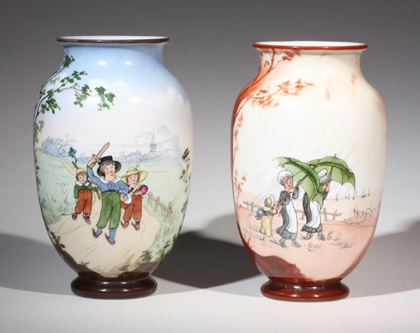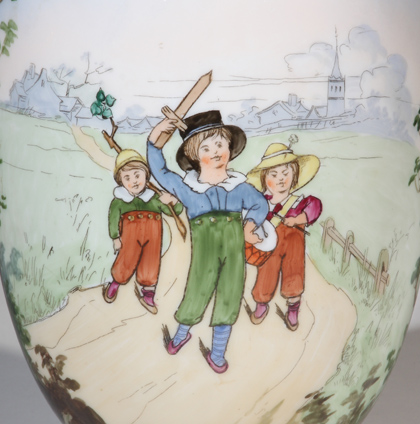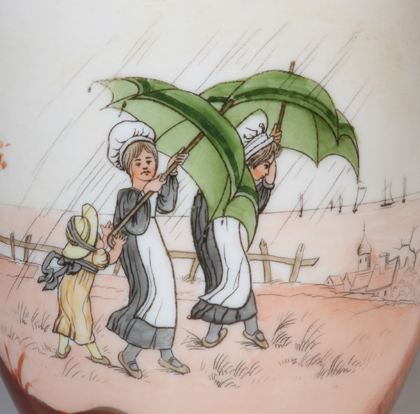Plagiarism, Victorian Style
Pity the poor prolific author-illustrator, so successful yet full of the belief that her art deserves better than to be turned into mere merchandize!

No wonder, then, that these vases are the result of plagiarism rather than authorized products created under the artist's own artistic control, adding to her wealth and encouraging her to produce even more.
English author, illustrator and artist Kate Greenaway (1846-1901) rose to fame when her 1878 illustrated children's book Under the Window became an international bestseller.

Greenaway created a remarkable visual world full of children. Boys and girls wore exquisite if somewhat imaginary clothes and hats. They paraded and ran around. They sat fishing or staring into the distance, often out to sea. Girls held babies and dolls. Boys carried toys and spades. They lived in a cozy village and roamed its streets and nearby fields.

Fame brought imitators and would-be collaborators from across Europe. Every self-styled children's author expected illustrations by Greenaway. A German composer sent her one hundred marks for twelve of her poems, which he had already set to music. Herr Fischer of the Royal and Imperial Porcelain Majolica Manufactory of Budapest had half a dozen employees copying her illustrations onto china plates. And a Mr Locker reported that a book called Afternoon Tea was 'a shameful imitation of [Greenaway's] manner, [which] if it goes on [would] tend to disgust the brutal British public and therefore injure [her].' All unauthorized.
And then there was Belgium. By 1882 she was so popular there that her books were being imitated and her illustrations were "copied without acknowledgment on to handkerchiefs, plates, vases, caskets, and other objects of commerce, and the copying was so vilely done that they were caricatures rather than reproductions of her work."
These are probably those vases. The great Belgian firm, Val-Saint-Lambert, was making enamel-painted vases at the time. Some were 'decorated with "romantic characters"' that could well have included Greenaway's children.
No wonder, then, that precise sources for these images are hard to find. These vases were not authentic merchandize. These were unauthorized imitations. In 1882 there was little that Greenaway could do to stop them. The first international copyright treaty came only in 1886.

